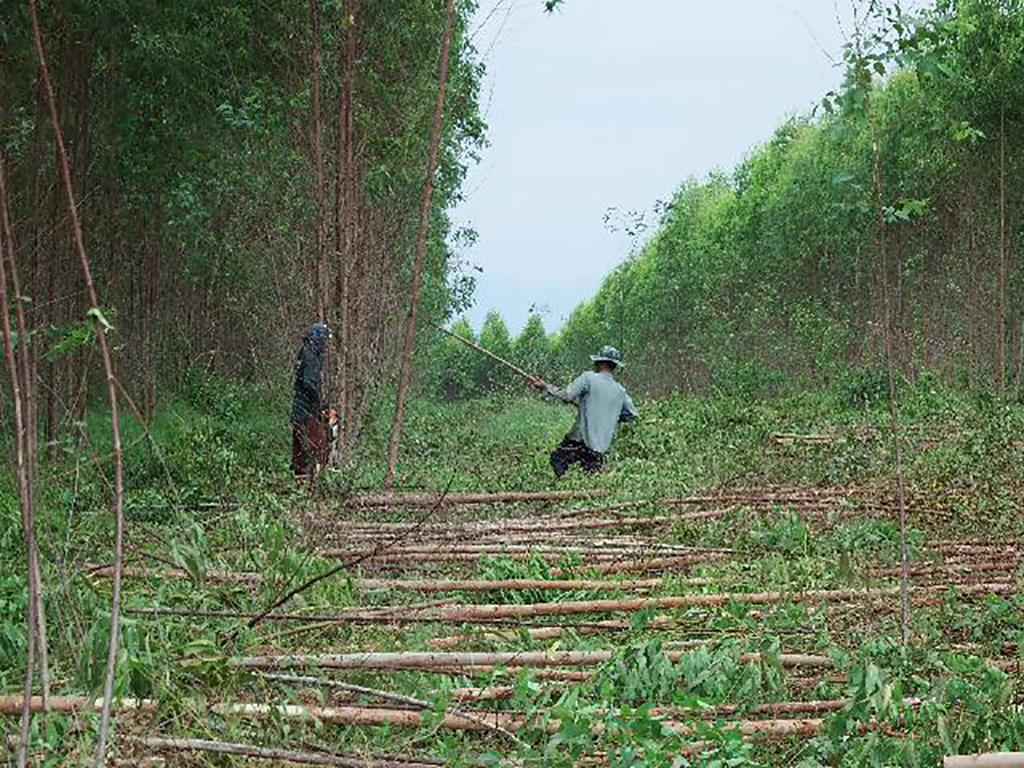Advancing the rights of local people: How REDD+ can continue to foster open and honest dialogues about natural assets to better manage forested landscapes

22 April is Earth Day! To celebrate the occasion, RECOFTC Executive Director Dr David Ganz makes the case that now more than ever we must continue to work to empower local people to effectively engage in mechanisms like REDD+ and other forms of Payment for Ecosystem Services (PES) to better manage their forested landscapes.
I am often asked where I stand on Reducing Emissions from Deforestation and Degradation or REDD+. As RECOFTC’s new Executive Director, I am also asked where the organization stands on REDD+. For those who do not understand this issue, let me briefly explain.
In the early days of REDD+, advocates of community forestry viewed it as a new way to compensate forest users for the opportunity costs of foregoing deforestation and degradation and incentivize more “climate-friendly” livelihood options, such as sustainable small-scale forest enterprises and climate smart agriculture. Protecting rights, including livelihoods, became a major concern in REDD+ policy, e.g., as reflected in the ‘‘safeguards” adopted at the United Nations Framework Convention on Climate Change (UNFCCC) Conference of the Parties (COP16) in Cancun, Mexico in 2010.
However, more than a decade after the REDD+ concept was proposed, direct payments to forest communities remain rare, while concerns about safeguarding livelihoods are increasing. The argument stands that while REDD+ has been very useful for changing the public discourse on conservation and the way national policy-makers view natural assets, the flow of investments, incentives and/or co-benefits has not made it down to the village level. Initially, REDD+ was viewed as a way to compensate actors for foregoing income-generating activities that involve deforestation and degradation. Therefore, we should have seen more smallholders and communities compensated for (or benefiting from) their opportunity costs of changing behavior and practices or development of other metrics that capture the co-benefits that REDD+ aspires to achieve.
While working with The Nature Conservancy, I had the chance to conduct research with Professor Kathleen Lawlor. We analyzed the initial outcomes of REDD+ projects that systematically reported their socio-economic dimensions. We conjectured that REDD+ projects could affect local well-being by:
“(1) creating (or blocking) material opportunities for wealth creation and well-being, such as jobs, revenue streams, infrastructure, and improved educational conditions;
(2) enhancing (or weakening) populations’ security, including tenure security, food security, livelihood security, and adaptability to climate change; and
(3) facilitating (or preventing) the empowerment of individuals and communities to participate in decisions affecting local land-use and development. “

These are the underlying issues that face RECOFTC, which is committed to empowering local people to effectively engage in mechanisms like REDD+ and other forms of Payment for Ecosystem Services (PES) to better manage their forested landscapes. While RECOFTC works on advancing the agenda for local people to have a strong voice in climate mitigation and adaptation, there is still a perception that the social and environmental safeguards are not yet aligned with REDD+, the Green Climate Fund and more broadly, green growth finance. This is far from the case. In my humble opinion, the timing is right for even more investment in climate mitigation, REDD+ and PES, especially from the private sector.
Like other sustainable forest management initiatives, REDD+ suffers from the inability to transform government organizations and institutions into having stronger governance structures, rules, regulations and enforcement. RECOFTC remains committed to working with both state and non-state actors on climate change mitigation through improved forest conditions and improved forest governance. We have, and must, continue to remain active on issues like REDD+, and now with donor support, we are working closely with Forest Law Enforcement, Governance and Trade (FLEGT) Voluntary Partnership Agreements and these government-led dialogues to hear and incorporate “local voices” for more equitable decision-making processes that strengthen forest governance in the region.
Lastly, RECOFTC also must view its engagement with REDD+ with a “no regrets” mindset -- just as many countries and donors have begun to do. Overall, the investments into these approaches and initiatives are helping to transform the forestry sector into one that takes into account the intersection with agriculture and other land uses -- a more holistic landscape approach for the Agriculture Forestry and Land Use sector. REDD+ investments have been instrumental for forestry to take on this larger perspective, as well as to update and upgrade critical infrastructure like National Forest Monitoring Systems or set up National Spatial Data Infrastructure for initiatives like One Map in Indonesia and Myanmar. In many REDD+ countries, this investment has led to the development of robust, repeatable forested landscape inventories, sometimes including ancestral rights and land tenure systems. These investments have helped create open, honest dialogue about a country’s natural assets, how they are managed and, more importantly, how local rights are allocated and/or strengthened.
Now, when people ask me whether I believe we should continue working on REDD+ and FLEGT, I can honestly answer, “Yes I do…. as it can continue to foster the spirit of community engagement in forest governance and management”.

